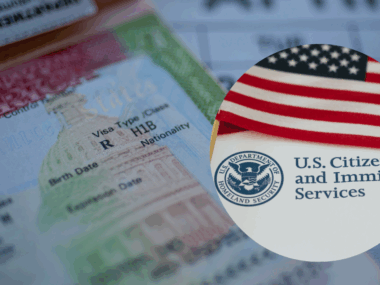Australia is one of the most immigrant-friendly countries in the world. With its strong economy, high wages, stunning landscapes, and a lifestyle that balances work and leisure, it’s no surprise that hundreds of thousands of newcomers choose Australia every year.
In 2025, Australia is looking to admit over 190,000 permanent migrants, with a majority entering through the Skilled Migration Program. If you’re a healthcare professional, IT specialist, or skilled tradesperson, Australia not only offers salaries of AUD $70,000–$120,000 per year, but also clear pathways to permanent residency and eventually citizenship.
This guide explains the salaries, jobs in demand, visa options, benefits and challenges, and step-by-step instructions to move to Australia in 2025.
How Much Can Skilled Workers Earn in Australia?
Salaries in Australia vary by sector, experience, and location.
Average Salaries by Occupation (2025)
| Occupation | Average Annual Salary (AUD) | Notes |
|---|---|---|
| Registered Nurse | $75,000 – $95,000 | Demand across all states |
| General Practitioner (Doctor) | $150,000 – $250,000 | Rural areas pay more |
| Software Engineer | $90,000 – $120,000 | Strong demand in Sydney, Melbourne |
| Cybersecurity Specialist | $95,000 – $125,000 | Priority occupation |
| Electrician | $70,000 – $95,000 | Needed in housing & construction |
| Welder | $65,000 – $90,000 | Especially in mining & infrastructure |
| Carpenter | $65,000 – $85,000 | Consistent housing demand |
| Teacher (STEM subjects) | $75,000 – $95,000 | High demand in public schools |
Regional Salary & Cost of Living Comparison
| City/Region | Average Salary (AUD) | Cost of Living (1-bed apt/month) |
|---|---|---|
| Sydney | $85,000 – $120,000 | $2,000 – $2,700 |
| Melbourne | $80,000 – $115,000 | $1,800 – $2,400 |
| Brisbane | $75,000 – $105,000 | $1,500 – $2,000 |
| Perth | $78,000 – $110,000 | $1,400 – $1,900 |
| Adelaide | $72,000 – $100,000 | $1,200 – $1,700 |
| Regional Areas | $65,000 – $95,000 | $900 – $1,300 |
Regional areas often offer lower living costs and extra migration points, making them attractive for skilled migrants.
Jobs in Demand in Australia 2025
The government publishes a Skilled Occupation List (SOL) that identifies shortage roles eligible for migration.
In 2025, the top jobs include:
-
Healthcare: Nurses, doctors, aged care workers, physiotherapists.
-
IT & Tech: Software engineers, cybersecurity specialists, cloud architects.
-
Skilled Trades: Electricians, welders, carpenters, plumbers.
-
Education: Secondary school teachers (math, science, IT).
-
Engineering: Civil, mechanical, electrical engineers.
-
Agriculture: Farm managers, machinery operators.
Australia Immigration Pathways
1. Skilled Independent Visa (Subclass 189)
-
Points-tested permanent visa.
-
No job offer required.
-
Based on skills, age, language, and education.
-
Eligible if your job is on the Skilled Occupation List.
-
Processing time: 8–12 months.
2. Skilled Nominated Visa (Subclass 190)
-
Requires state/territory nomination.
-
Points-tested, permanent visa.
-
State chooses based on local labor shortages.
3. Skilled Work Regional Visa (Subclass 491)
-
For regional areas (outside major cities).
-
Temporary visa (5 years), with pathway to PR after 3 years.
-
Offers 15 extra points for regional nomination.
4. Employer-Sponsored Visas (Subclass 482 & 186)
-
Temporary Skill Shortage Visa (482): Employer-sponsored, valid 2–4 years.
-
Employer Nomination Scheme (186): Leads to PR if sponsored by an employer.
5. Global Talent Visa (Subclass 858)
-
For highly skilled professionals in tech, engineering, and academia.
-
Fast-tracked permanent visa.
Australia’s Points System Explained
To apply for Subclass 189, 190, or 491 visas, you must score at least 65 points on the immigration points test.
Points Breakdown
| Factor | Maximum Points |
|---|---|
| Age (25–32 years) | 30 |
| English proficiency (IELTS 8.0) | 20 |
| Skilled work experience | 20 |
| Education (PhD/Master’s) | 20 |
| Australian study/work experience | 15 |
| State nomination (Subclass 190) | 5 |
| Regional nomination (Subclass 491) | 15 |
The sweet spot: Young professionals with strong English and in-demand skills score highest.
Step-by-Step Application Guide
Step 1: Check Eligibility & Skilled Occupation List
-
Confirm your job is listed (e.g., nurse, electrician, software engineer).
Step 2: Take English Language Test
-
IELTS, PTE, or TOEFL accepted.
-
Higher scores = more points.
Step 3: Get Skills Assessment
-
Submit qualifications to an Australian assessing authority (e.g., ANMAC for nurses, Engineers Australia, TRA for trades).
Step 4: Submit Expression of Interest (EOI)
-
Apply through the SkillSelect system.
-
Enter your points score and details.
Step 5: Receive Invitation to Apply (ITA)
-
If selected, you’ll receive an ITA.
-
Higher points = higher chance.
Step 6: Apply for Visa
-
Submit documents: passport, English test, skills assessment, medical, police clearance.
-
Pay fees (AUD $4,640 for main applicant).
Step 7: Wait for Processing
-
189 & 190: 8–12 months.
-
491: 6–9 months.
Step 8: Move to Australia
-
PR visa holders can live, work, and study anywhere in Australia.
-
491 visa holders must live in regional areas for 3 years before applying for PR.
Benefits of Migrating to Australia
-
High salaries: $70,000–$120,000 depending on profession.
-
Path to citizenship: PR → citizenship after 4 years.
-
Healthcare & education: Access to Medicare and public schooling.
-
Multicultural society: Over 30% of Australians are immigrants.
-
Work-life balance: Paid leave, strong labor protections.
-
Regional incentives: Extra points and faster processing in regional areas.
Challenges for Migrants
-
High cost of living in Sydney and Melbourne.
-
Competition for visas — only the highest-scoring EOIs get ITAs.
-
Skills assessments — time-consuming and sometimes costly.
-
Regional settlement — some visas require living in non-urban areas.
-
Cultural adjustment — adapting to a new work style and lifestyle.
Quick Comparison: Australia Skilled Visas
| Visa | Type | PR Pathway | Processing Time | Job Offer Needed? |
|---|---|---|---|---|
| Subclass 189 | Independent PR | Direct PR | 8–12 months | No |
| Subclass 190 | State-nominated PR | Direct PR | 8–12 months | No |
| Subclass 491 | Regional | PR after 3 years | 6–9 months | No |
| Subclass 482 | Employer-sponsored | Temporary, PR possible | 2–6 months | Yes |
| Subclass 186 | Employer nomination | Direct PR | 8–12 months | Yes |
| Subclass 858 | Global Talent | Direct PR | 3–6 months | No (invitation) |
Conclusion
In 2025, Australia’s Skilled Migration Program remains one of the most reliable immigration pathways for healthcare professionals, IT specialists, and skilled trades workers. With salaries ranging from AUD $70,000 to $120,000, strong demand across multiple sectors, and fast-track options like the Global Talent Visa, it’s no wonder thousands of people choose Australia every year.
If you’re serious about moving, your first step is to check the Skilled Occupation List, calculate your points, and prepare your skills assessment. Once you have a strong profile, Australia can offer not just a job — but a long-term future with permanent residency and eventual citizenship.


